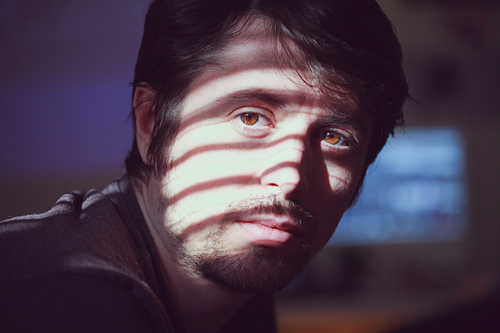Portrait Photography Masterclass - Using Natural Light
Many photographers believe that they need studio lights to take great indoor portraits. In reality, shooting with natural light can produce fantastic results. The simplicity of shooting with natural light gives a classic look to portraits. Some subjects can be intimidated by a studio environment, and keeping things simple often results in more effective portraits.

The simplest way to shoot a portrait indoors with natural light is to position them near a window. Avoid direct sunlight, unless you are looking for a character portrait with harsh shadows and contrast. Light diffused through curtains can be very flattering to a subject, and produces even tones in a photograph. A reflector can be used to bounce light back into shadows, and this produces a nice balanced light.
This method of shooting portraits works for most subjects, but is particularly effective for shots of children and mature subjects. The single light results in a different mood than the usual brightly-lit shots of children which most photographers take. For older subjects, a single natural light suggests dignity and maturity. This style of portrait is also very effective for nude and boudoir portraits.
When positioning your subject, look for a way to shoot them so the background is clear of distractions. Change your angle if required, and consider removing items from the background which may spoil the picture. Depending on your subject, a background with light or dark tones may suit better.
Exposure for shots taken in window light needs some thought, as some cameras can’t cope with the contrast levels. If in doubt, take several shots at different exposure settings. If your camera has spot metering, select this and expose for the subject’s face. Select a wide aperture to soften the background behind the subject. Light levels can be low when shooting in window light, so keep an eye on shutter speeds to ensure shots aren’t ruined by camera shake. If working with a digital SLR camera, select manual mode so you can take control of the shot.
Relaxing your subject is one of the most important parts of taking an effective portrait photograph. If your subject is a child, you must make the sitting enjoyable and fun for them. Ask them to sing or tell you a story, and look for those moments when their personality shines through. When shooting adults, talk to them about their interests to relax them. Wait for the moments when they smile naturally or display other facial expressions which may capture their personality.
Framing the subject’s head and shoulders in the shot produces a very effective portrait, but don’t be afraid to experiment. There may be a reason for including the subject’s hands in the shot, for example. Tighter framing can be very powerful for some subjects. A shot of a person’s eyes may be all that’s needed to make an effective portrait.
A tripod is a very useful tool in portrait photography. As well as offering more options over choice of shutter speed and aperture, using a tripod can allow you to get closer to a subject. Rather than your face being hidden behind the camera, you can sit and talk to your subject if your camera is mounted on a tripod. At appropriate moments, a press of the shutter button will capture your subject as they relax and chat with you.
Using a simple lighting set up and limited equipment means you can concentrate on working with your subject and capturing their personality in a portrait.
Written by: Kaizen Marketing

Comments